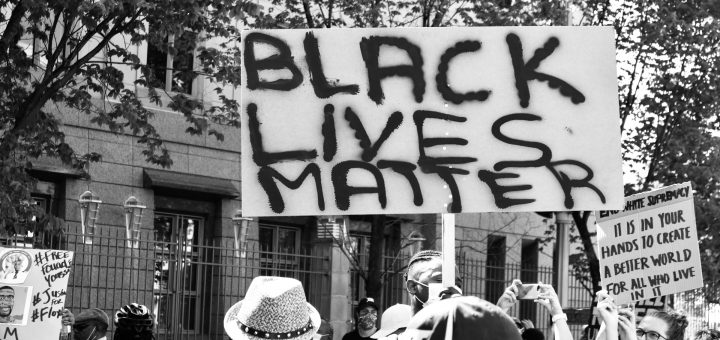Systemic Oppression in Sentencing: ONCA to Rule on Anti-Black Racism Reports in R v Morris

On February 11, 2021, the Ontario Court of Appeal (“ONCA”) will hear the Crown’s appeal to Justice Shaun Nakatsuru’s decision in R v Morris, 2018 ONSC 5186 [Morris]. In his decision, Justice Nakatsuru used pre-sentencing reports on anti-Black racism and the social history of the defendant to account for the factor of systemic racism in the sentencing of Kevin Morris for his criminal offence. Ultimately, this case is about whether judges can consider the effects of systemic anti-Black racism in sentencing hearings.
Factual and Procedural Background
In 2014, Kevin Morris, a young 22-year-old Black man, was detained, chased, and injured by police officers P.C. Keefer and D.C. Moorcroft in a parking lot. The police officers did so in lieu of investigating a nearby home invasion; however, neither Mr. Morris nor the three other young Black men Mr. Morris was with were involved with the invasion. In the aftermath, a jury found Mr. Morris guilty of charges relating to the possession of an unauthorized gun. At his sentencing hearing, the Crown requested Mr. Morris to be jailed for 4 to 4.5 years. Mr. Morris’s defence lawyers requested a sentence of 1 year. Some previous sentences for gun offences relating to criminal activity have usually been at least 3 years, while other cases for gun offences have been from 1 to 2 years. Upon considering the systemic anti-Black racism that applied generally and personally to Mr. Morris, Justice Nakatsuru sentenced Mr. Morris to 15 months. The sentence was then reduced to 1 year after accounting for the police officers’ infringement on the Charter of Rights and Freedoms.
In their appeal factum to the ONCA, the Crown argues that Justice Nakatsuru’s sentence is lenient, and that systemic factors should not be taken into account because there is no causal link between systemic racism and Mr. Morris’s offence. Mr. Morris’s defence lawyers and the 10 intervenors—including the Black Legal Action Centre and the David Asper Centre for Constitutional Rights—agued otherwise in their factums, advocating for the inclusion of reports that detail systemic factors when sentencing individuals who are targeted by oppressive systems in order to advance substantive equality in sentencing.
Sentencing Principles and Pre-Sentencing Reports on Anti-Black Racism
Justice Nakatsuru’s decision was a departure from the pattern of courts’ harsh sentences for gun offences, but not out of sync with the sentencing principles and discretion afforded to judges by the Criminal Code and case law.
Gladue Principles
Section 718 to 718.3 of the Criminal Code outlines many sentencing principles—the most relevant to Morris decision include general deterrence, denunciation, proportionality of the offence’s gravity to the offender’s responsibility, mitigating and aggravating factors, and section 718.2(e), the consideration of alternative sanctions other than imprisonment especially for Indigenous peoples. In R v Gladue, [1999] 1 SCR 688 [Gladue], the interpretation of Section 718.2(e) created a sentencing framework that allowed for systemic factors and the background of Indigenous peoples to be taken into account in sentencing—creating Gladue pre-sentencing reports. R v Ipeelee, 2012 SCC 13 [Ipeelee] later clarified Gladue, underscoring that courts must take judicial notice of the history of colonialism in their sentencing of Indigenous peoples. Ipeelee affirmed that:
“[T]he failure to apply the Gladue principles in any case would also result in a sentence that is not fit and is not consistent with the fundamental principle of proportionality” (Ipeelee, page 437).
Since Gladue and Ipeelee, there have been significant judicial and academic discussion on the applicability of a similar framework to Black peoples at sentencing hearings to take into account factors of systemic anti-Black racism and its effects on the responsibility of the offender. Most recently, Justice Nakatsuru’s sentencing decision in R v Jackson, 2018 ONSC 2528 [Jackson] utilized a Gladue framework to consider the problem of unfair and disproportionate incarceration of Black offenders and its links to colonialism, slavery, segregation, intergenerational trauma, and overt and systemic racism. Justice Nakatsuru did the same in Morris when admitting two reports: one of systemic racism in general and one of Ms. Morris’s specific social history. While the Crown tried to argue that the reports should not be admitted on the basis that courts have already taken judicial notice of racism, Justice Nakatsuru affirmed the need for the reports to help explain racism to judges, lawyers, and the public.
General Deterrence, Denunciation, and Aggravating Factors
In Morris, Justice Nakatsuru explained that general deterrence and denunciation—which often justify harsher sentences for gun crimes—are not in opposition with using a systemic factors approach. He demands that, when applying the principles of general deterrence and denunciation, judges must not apply these simplistically, but instead, take into account what those principles mean for the communities where Mr. Morris is from. Shorter sentences can still fulfill the purpose of denouncing gun crimes and longer sentences may fail to deter future crimes because they contribute to the community’s knowledge that the criminal justice system is anti-Black racist. Moreover, even the Supreme Court of Canada recognizes that general deterrence is an ineffective principle in practice; in other words, harsher sentences do not actually prevent future crime (R v Nur, 2015 SCC 15; R v Proulx, 200 SCC 5).
Similarly, Justice Nakatsuru rebuts simplistic explanations of aggravating factors argued by the Crown. For example, while the Crown argued that running away from the police and not entering a guilty plea should be given negative inference and highlight Ms. Morris’s inability to show remorse, Justice Nakatsuru maintains that given the historical racism by police against young Black men and the presumption of innocence, none of these factors should be weighed heavily against Mr. Morris. In this nuanced way, Justice Nakatsuru demonstrated that accounting for the history of systemic anti-Black racism and understanding how it applies to Mr. Morris’s life is in line with the sentencing principles that ultimately aim to deliver a proportionate and ‘fit’ sentence. The Black Legal Action Centre agrees with Justice Nakatsuru’s approach and argue that anti-Black racism by the police should be considered at the sentencing hearing (Black Legal Action Centre and The Canadian Association of Black Lawyers Intervenor Factum). When accounting for the effects of experiencing the death of family and friends, racism and ableism at school, and getting stabbed himself, it makes sense that Mr. Morris’s circumstances “made the possibility of possessing a gun real to [him]” (Morris, para 74). Justice Nakatsuru is telling the non-Black, private-schooled, upper middle-class readers of his decision that they do not have the same life experiences as Mr. Morris and therefore, they cannot judge Mr. Morris as responsible by seemingly neutral standards of the criminal justice system. Justice Nakatsuru says to Mr. Morris:
“Nothing that I say here should be taken to mean that you did not have a moral choice when you committed these crimes. However, what I do say is that your choice was constrained by these forces. Social structures and societal attitudes that were born of colonialism, slavery, and racism have a very long reach. We must not forget this. Our memory of past injustices must be long enough to do justice in an individual case.” (Morris, para 76)
By underscoring that systemic factors are crucial to determining whether a sentence is truly proportionate, Justice Nakatsuru is challenging the normative foundations of sentencing principles that overstate an individual’s ability to make a bad choice without giving due attention to their context of limited choices.
Evidentiary Burden on Black and Indigenous Offenders
The Crown in their factum to the ONCA, argued that anti-Black racism and Mr. Morris’s possession of a gun must meet the high test for causal connection, by introducing specific evidence to demonstrate if systemic factors are to have any bearing on Mr. Morris’s sentencing. However, the Black Legal Action Centre in their intervenor factum and David Asper Centre remind the court of Ipeelee’s explicit rejection of such a causation requirement (David Asper Centre of Constitutional Rights Intervenor Factum). They argue that such a requirement would impose an unfair evidentiary burden for Black offenders. Justice Nakatsuru, by citing the pre-sentencing reports on anti-Black racism, accounts for how Black peoples’ negative treatment in institutions of child welfare, education, employment, and health have “compounding and cyclical” effects of producing poverty (Morris, para 22). Such a complex and nuanced understanding of how anti-Black racism affects individuals would be rendered meaningless if the Crown’s causal link argument prevailed.
The evidentiary burden argument recalls the ways in which even Gladue principles, despite their twenty-five years of jurisprudence, have still presented an unfair burden on Indigenous offenders and thus, has not resulted in minimizing the over-incarceration of Indigenous peoples in the Canadian prison system. While Gladue was to serve judicial notice and impose responsibility on judges to account for the histories of colonialism, it has had the adverse effect of further burdening Indigenous peoples to have to draw a clear connection between how residential schools, the Sixties Scoop, the Indian Act, Missing and Murdered Indigenous Women and Girls, have all impacted to their personal lives to ‘make the possibility’ of committing a crime real. By advocating against an unfair evidentiary burden for Black offenders, the intervenors are proactively addressing an issue that already exists with the sentencing of Indigenous offenders.
Beyond Sentencing: Consider Gladue Principles and Systemic Factors at All Stages
If the ONCA in Morris dismisses the Crown’s appeal and holds that a causal connection is not required, then it would be one step forward in ensuring that anti-Black racism is taken seriously and accounted for in sentencing hearings. However, other lessons learned from the Gladue framework shows us that there is a need to admit consideration of colonialism and racism beyond the sentencing hearing. After all, sentencing occurs as one of the last stages of the criminal justice funnel. Preceding sentencing is the trial itself, the pre-trial detention, and the police arrest. It is clear that Justice Nakatsuru, who clearly understands the ways in which systemic oppression affects individuals and their choices, was still constrained in his role as a trial judge to bring such evidence into court when determining guilt. This illustrates the need for legislative reform to allow judges to admit such evidence when determining guilt itself. The determination of guilt at trial, like the determination of moral responsibility at sentencing, both assume that people are free actors who make bad choices despite multiple good choices available, and hence should be held accountable. However, systemic forces of racism and colonialism reveal that liberal foundations of the criminal justice system that prioritize individual choice is fictitious. If the histories of colonialism, slavery, segregation, intergenerational trauma, and overt and systemic racism are to be truly understood and accounted for, then that process should at least begin at first contact with the criminal justice system, the police, and at every stage thereafter.
While Justice Nakatsuru ruled that the officers breached Mr. Morris’s Charter rights, and consequently used the breach to reduce Mr. Morris’s sentence, the broader question of why the police targeted Mr. Morris in the first place could not be explained within the confines of evidentiary rules in the trial court. The long history of anti-Black racism by police as an institution were systemic factors that help reduce Mr. Morris’s sentence, but will not help to reduce the polices’ systemic racism against young Black men in general. Therefore, there is credence to the argument that taking into account systemic factors needs to be allowed much earlier in the criminal justice system process for there to be any hope of reducing over-incarceration of Black and Indigenous peoples by the Canadian criminal justice system. In the absence of continued political and judicial will to meaningfully consider systemic racism, calls for defunding the police, prison abolition, and transformative justice alternatives to punishment by community organizers become more compelling.
Justice Nakatsuru’s Principled Stand Against Fear
Justice Nakatsuru stands as an outlier among other actors within the criminal justice system in many aspects. Deemed as the ‘poetic judge,’ he is notable for writing his sentencing decisions in plain language and addressed to the offender directly in first and second person writing. However, Justice Nakatsuru’s analysis of systemic oppression and sentencing are far from plain or simple. Not only was this witnessed by his subtle and nuanced treatment of general deterrence but is also apparent in the way he talked about fear in Morris. He starts off his decision by addressing the public who may accuse him of “being soft” on gun crime (Morris, para 1). He validates that the tragedies of gun violence bring up strong emotions of fear within all of us. Yet, he says: “My role is to give expression to that fear… But it is not my role to give in to that fear” (Morris, para 52). He strongly rejects the notion that public fear should justify harsher punishment.
Instead, Justice Nakatsuru focuses on Mr. Morris’s fears: “Mr. Morris fears both freedom and incarceration” and observes that in feeling overwhelmed at trial, “all of this is felt very deeply” by him. (Morris, para 46 and para 72 respectively). In doing so, Justice Nakatsuru breaks the myth that reducing a sentence is akin to a literal ‘get out of jail free’ card, but that instead, it highlights that Mr. Morris continues to be punished by his social circumstances, which jail time will not change. Justice Nakatsuru draws attention to how fear has been instilled into Mr. Morris from his early childhood when he experienced the death of his father at age 7, when he was punished by teachers at school, when he would walk down the street and be stabbed, and when he and his friends were constantly surveilled by police. In this way, Justice Nakatsuru reverses common conceptions of who lives in fear. Implicitly, he calls out the public’s fear of Black children as anti-Black racist, and instead centres Mr. Morris’s fear of a racist world that continues to marginalize him.
Ultimately, Justice Nakatsuru asks “So why would you pick up a gun Mr. Morris?” (Morris, para 78). By admitting the pre-sentencing reports on anti-Black racism and Mr. Morris’s social history, Justice Nakatsuru can more clearly understand the path that led Mr. Morris there. After acknowledging the fear and powerlessness that Mr. Morris must have experienced in his 22 years of life, Justice Nakatsuru ends his remarks to Mr. Morris by reinforcing the power he has the multiple forces of systemic oppression stacked against him:
“[W]e judges, can take chances on people sometimes. Within the limits of the law. And I’m taking a chance on you. Because I do believe that you are a better and stronger person than the facts of these offences show you to be. So, I hope you are strong enough to resist those forces that will bring you potentially back into jail when you are released.”
On February 11, let us hope the Ontario Court of Appeal affirms Justice Nakatsuru’s fierce decision-making, takes a chance on Mr. Morris, and begins to hold this very legal system accountable for its role in the legacies of slavery and colonialism.








Join the conversation